Winter in the northern states inevitably brings snow. Most cities and states that are used to snowy winters are adept at handling snow on the roads and highways, but what about around your home? For people moving to the north from warmer climates, the prospect of removing snow from your home or car can be daunting. Here are some snow removal tips to make your first winter run smoothly.
Tools you will need:
Snow shovel(s) – a good, sturdy shovel is an invaluable resource when it comes to clearing or removing snow from around your home.
Salt or ‘Ice Melt’ – These work to melt the ice on sidewalks, driveways, and steps, but be careful about what kind you purchase. Many salt products can be dangerous and/or painful for pets, so look for pet-safe ice melting agents if this is a concern. It’s also a good idea to check to make sure the ice melting product you have is safe to be used in your town.
Ice scraper/snow brush – These are primarily used on your vehicle’s windshield and windows should it snow or become icy overnight or while you’re at work, out shopping, etc.
Snowblower – A more expensive option than a shovel, but less labor-intensive and time-consuming for clearing large areas, such as a long driveway.
Proper Clothing – When removing snow, make sure you wear smart clothing choices. Wearing warm, weather-resistant coats, hats, gloves, and boots are important for being safe and comfortable outdoors for longer periods of time (no one wants to get frost-bite or hypothermia).
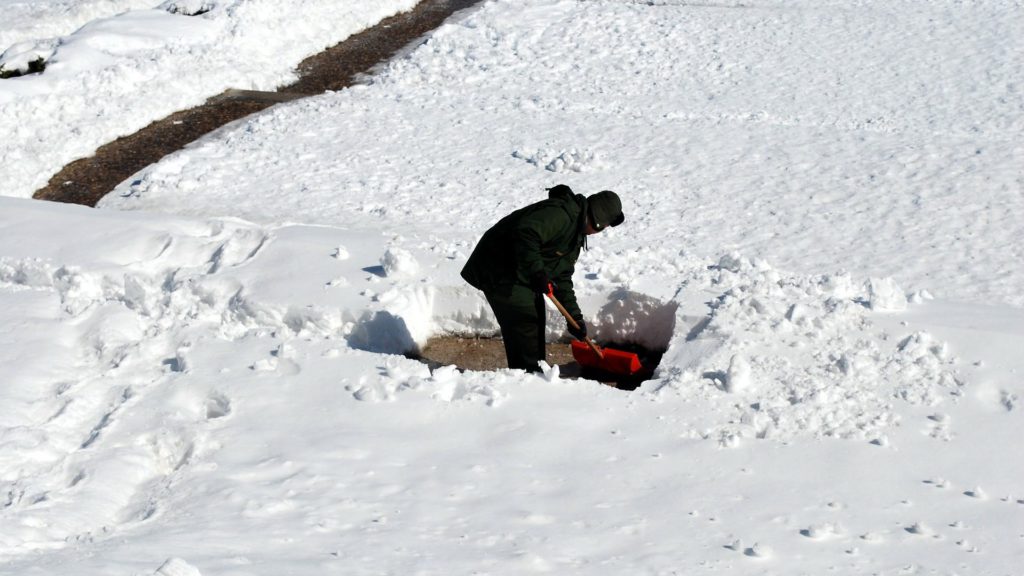
It’s important to have a good, sturdy shovel and proper clothing when shoveling snow from your driveway or walkway.
On your driveway
Private homes are responsible for their own snow removal. Occupants must either remove the snow from their driveway themselves or hire someone to do it. Snow can either be shoveled or “blown” by a snowblower from the driveway to the sides or grassy areas of the property. The driveway must be clear enough for vehicles to get in and out, for mail to be delivered, and for the property to be accessible by emergency vehicles.
It’s best during heavy snowfall to go out and clear the driveway at regular intervals, if possible. This not only makes removing the snow more manageable (especially if being cleared manually with a shovel; snow can get quite heavy), but also helps prevent the bottom later of snow from turning to ice. In icy conditions, it’s a good idea to apply salt or Ice Melt to driveways to help make them less slippery and easier to drive on. Be sure to check with your town for what is safe to use, and keep pets away from any products that aren’t labeled as “pet friendly,” as they are highly toxic to animals.
Note: Always use your best judgement when clearing snow! Shoveling can be very labor-intensive, so listen to your body to avoid injury and stop shoveling immediately and call 911 if you think you are having a medical emergency.
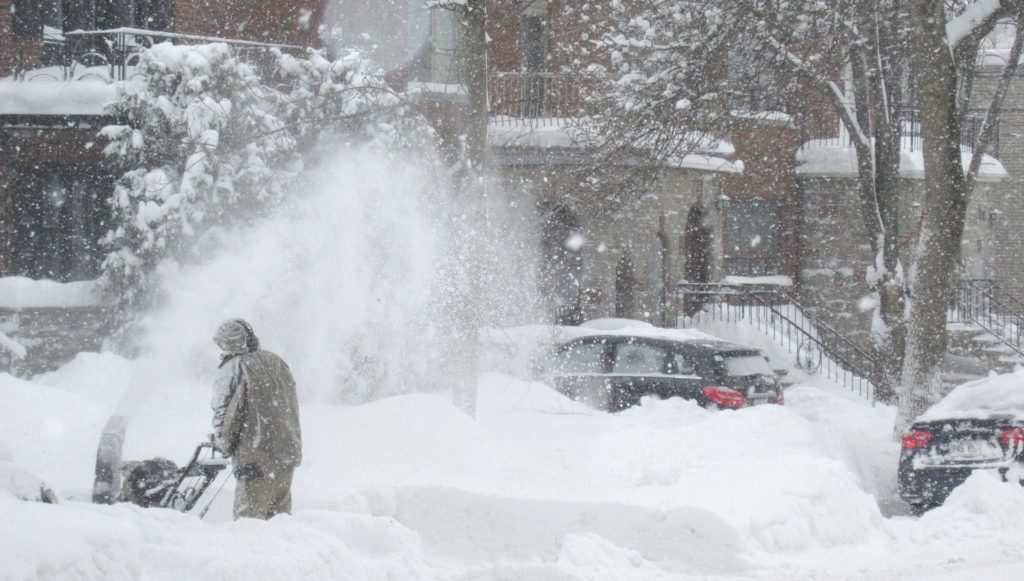
Some people who have longer driveways or walkways opt to invest in a snowblower.
On your sidewalk
If your home has a sidewalk on the property, you are usually responsible for clearing them. Most towns will have a time period by which they are expected to be cleared, typically to allow neighborhood children a safe route when walking to school. You can find out the time by checking your town’s website, calling the municipal offices, or asking at the library. Sidewalks should be cleared sufficiently to let a person or wheelchair pass by safely.
The snow can either be shoveled or “blown” by a snowblower onto the nearby grass, or another area that is not the driveway or the road. If there is ice on the sidewalk, you’ll want to sprinkle salt or Ice Melt to make sure no one walking past slips or falls. Again, it is advisable to check with your town for what type of ice melting product is recommended and safe for pets and the environment. If you don’t clear the snow from your sidewalk, you may receive a fine from the town. If you are leaving on vacation during winter months and snow is likely, find someone (like a neighbor) who is willing to clear your sidewalk while you’re gone.
On the path/walkway to your front door
If you don’t use the front door and your mailbox is not located near it, you can theoretically skip clearing snow from the path to the door, but it’s usually a safer choice to keep it clear in case of emergency. Clearing a path during every accumulating snowfall also makes sure it doesn’t become completely impassable throughout the winter.
However, if your mailbox is located near or on your front door, you are required to clear an accessible path so your mail carrier can safely deliver mail.
On your deck/patio/other areas around your home
It’s only necessary to remove snow from a deck if there is very heavy snowfall or if the landlord has recommended it. Patios generally do not need clearing, unless you will need to walk across the area or for your pet to access it.
If your heating system has any ventilation pipes that vent outdoors and may get blocked by snowfall, make sure you check them regularly and clear as needed.
Around your mailbox
To ensure regular delivery of mail, make sure you clear a path to your mailbox, whether it is on the front of your house or near the curb.
If you live in a townhouse/condo
Some townhouse complexes will take care of all snow removal on paths, driveways and sidewalks. However, others will only cover certain areas or may have rules you must follow to make sure your areas are cleared. If you live in a condo or townhouse, check the association documents or ask your landlord for details.
On your vehicle
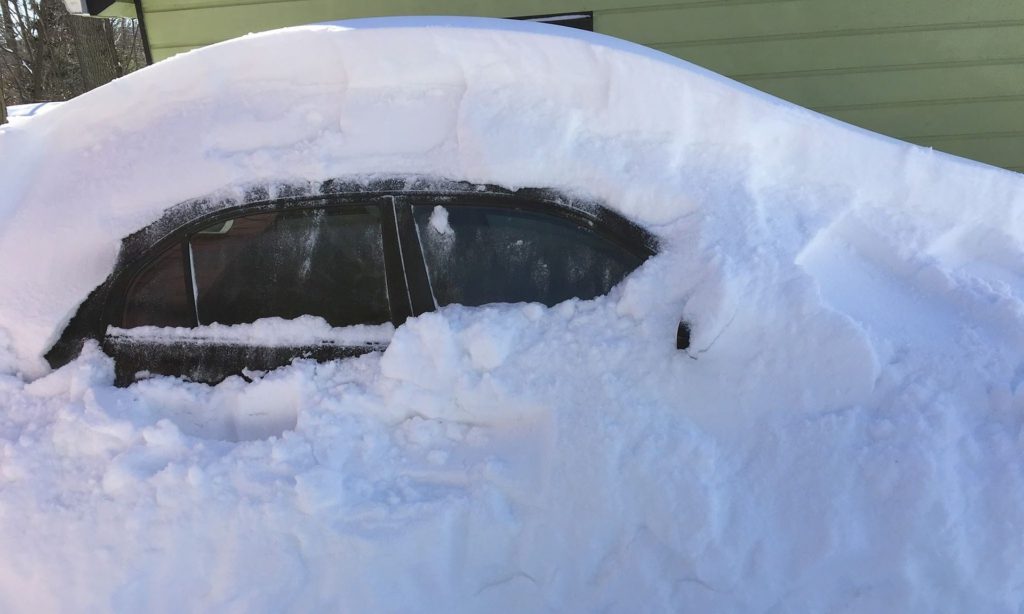
Clear all the snow off your car before driving; not only is driving with snow on your car dangerous, but is also illegal.
Make sure you clear snow from the exhaust area (tailpipe) of your car BEFORE you turn it on. Snow must be removed from the entire vehicle (not just the windshields) before you drive it, so make sure you have a long snow brush and/or a way to reach the roof of your vehicle. Driving with ice and snow accumulated on your windshield or roof is not only dangerous, but illegal.
Despite the chilly weather, winter can be a very enjoyable season with the proper planning and safety precautions. So stay safe in the snow, and enjoy the beauty of your first winter!
This blog provides general guidelines for snow removal. As every situation is different, please consult with your landlord, property manager, or town for proper snow and ice removal rules and regulations.
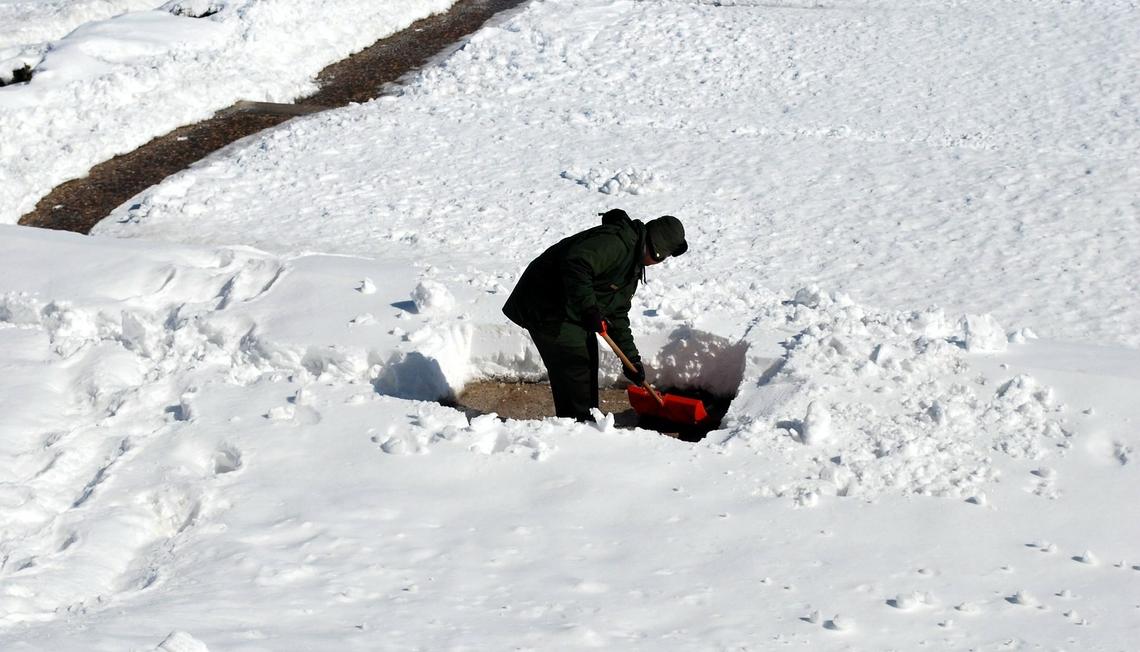

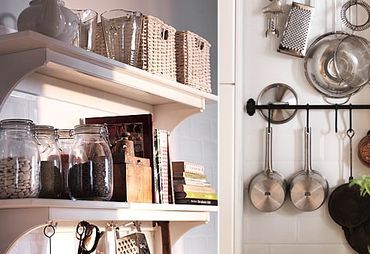
 Sign up today to get access to 1000's of homes we have available!
Sign up today to get access to 1000's of homes we have available!
